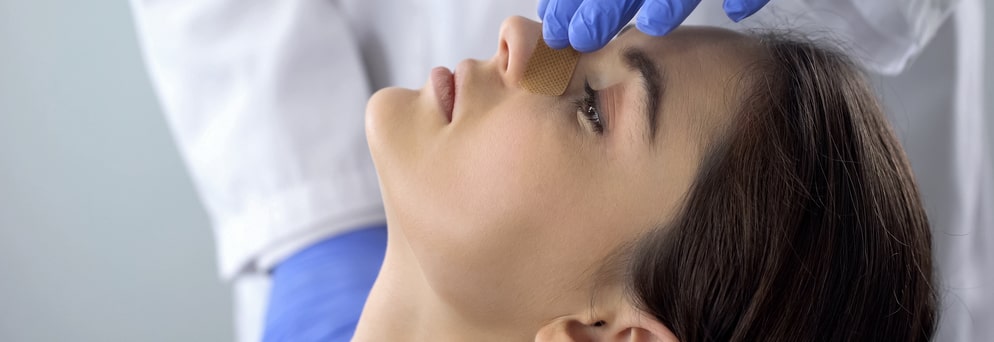
Ever since people have come accustomed to seeing their faces on video calls, it has sparked a boost of interest for cosmetic surgery enhancements to the face. And there is one procedure that has gained more popularity across the board— the revision rhinoplasty.
Perhaps, the slight imperfections or underwhelmed results from a previous nose job never bothered a person before the pandemic. But now, being on camera has become a new way of life, and constantly looking at your face has convinced people to get a revision rhinoplasty for their nose.
We'll explain why people are having revision rhinoplasty procedures and what makes this procedure more challenging to perform versus a first-time nose job surgery. Let's begin with the basic question- what is a revision rhinoplasty?
Revision rhinoplasty, also known as secondary rhinoplasty, involves correcting or altering changes to an initial nose job. There are two general causes for a revision rhinoplasty, improving the aesthetic or functionality of the nose or both.
If a person is dissatisfied or dishearten by the look of the nose after their initial rhinoplasty, that's considered a cosmetic revision. There are no medical issues that need to be addressed, just the unfortunate circumstance of the nose looking different than the desired outcome.
One factor that may cause disappointment with the results of a nose job could be the thickness of the skin. Patients who naturally have thicker layers of skin, such as Asians or African Americans, can make it challenging to narrow the nose tip into a more defined look.
A functional revision is needed when the patient has issues breathing due to an obstruction to their nasal passage that wasn't appropriately addressed from the first rhinoplasty or from removing too much cartilage with the initial surgery- making the nose structurally weak.
Revision rhinoplasty is not necessarily done after every nose job and is determined on a case-by-case basis.
Typically, it can take one to two years for the initial nose job to fully heal and reveal the final results. If a patient is considering a revision rhinoplasty and the time has passed from the initial procedure, an ideal candidate would be:
The goal with a secondary rhinoplasty is to make sure the nose functions properly and looks natural and well-balanced to the face. When too much rhinoplasty work is done, the shape of the nose will no longer look in proportion to the shape of the face and could risk losing ethnic identity.
There are two main methods of a rhinoplasty procedure, open and closed. And with revision rhinoplasty, either surgery technique could take place. The type of procedure will depend on how your board-certified cosmetic surgeon will address the issues and revisions.
We explain the basic details of each rhinoplasty procedure.
Open Rhinoplasty is a technique when the surgeon makes any incisions inside the nose and across the columella (the strip of skin that separates the nostrils). This allows the surgeon to have a full view and access to soft tissues that need to be revised inside the nose. Most rhinoplasty revisions are performed with this technique to address any structural changes or needed support.
Closed Rhinoplasty is when all the surgical incisions are made inside the nose, so there is no external scarring. Although closed rhinoplasty can address the same issues as open rhinoplasty, it is often used to address any problems with the bridge of the nose. The incisions made only inside the nose don't provide a complete view and access to the cartilage that needs to be removed or reshaped. However, it doesn't mean it is ineffective, just reserved for more minor changes.
As much as we would like to believe that having cosmetic surgery will fix the shortcomings, imperfections, or improve bodily functions on the first try. That is just not realistic. No cosmetic procedure can ever fully guarantee a perfect outcome.
A normal rhinoplasty is already a complex plastic surgery that aims to strike a balance of harmonious form and proper function.
With revision rhinoplasty, a surgeon is challenged with maneuvering around compromised cartilage and skin tissue while adjusting and reshaping the nose's structure. This is why selecting a board-certified plastic surgeon specializing in or having extensive knowledge of nose job revision is critical for an optimal outcome.
To find a board-certified cosmetic surgeon experienced with revision rhinoplasty, use our "Find a Doctor" navigation tool for a medical professional in your area.
- VM